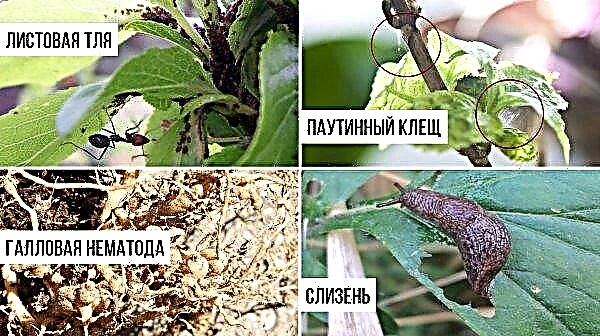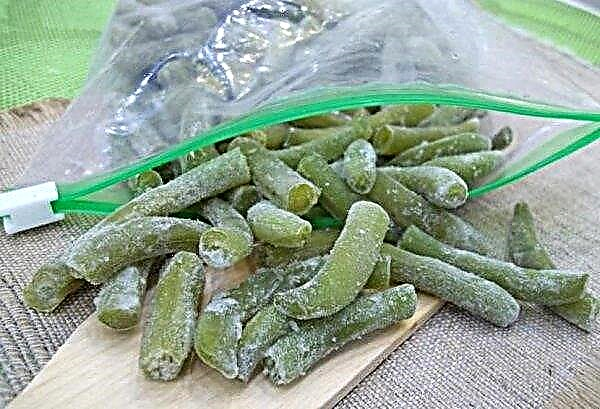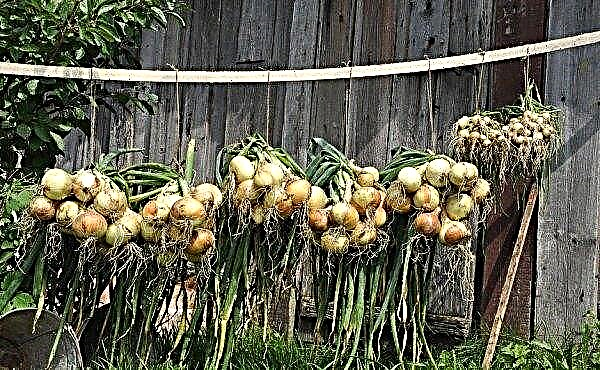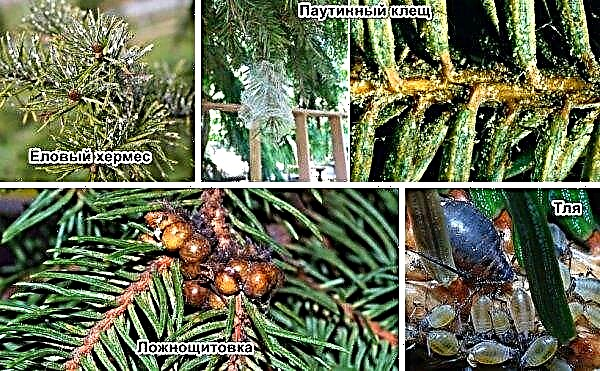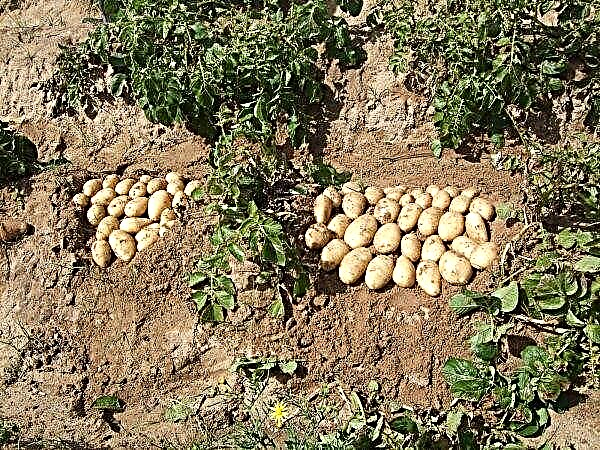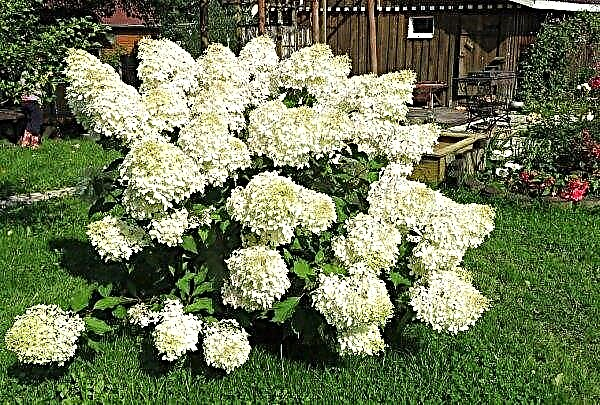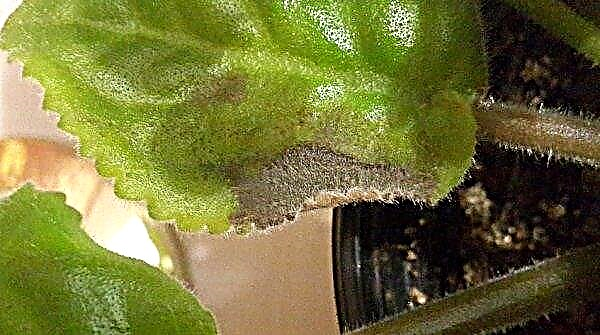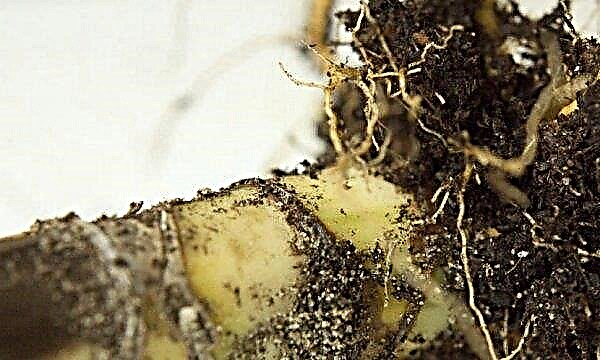Hydrangea is a plant that is highly regarded by florists. Various varieties of culture look very impressive and attractive, decorating flower beds, alleys and gardens. Despite the fact that hydrangea comes from warm regions, today it is possible to grow it in severe climatic conditions, where during the warm season it is also able to delight others with its elegant refinement.
The best frost-resistant varieties for the North-West
Hydrangea was introduced to Europe at the end of the XIX century. and quickly gained popularity, which prompted breeders to develop new varieties. For decades, many varieties of this wonderful plant have been studied and created. At the same time, one of the main tasks of scientists was to create varieties with improved indicators not only of decorativeness, but also of resistance to climatic features. Today, hydrangea can be planted in almost any region of Russia, choosing a culture with a sufficient level of frost resistance. In the conditions of the North-Western district, it is recommended to pay attention to such types of hydrangeas as paniculate and tree-like.
Today, hydrangea can be planted in almost any region of Russia, choosing a culture with a sufficient level of frost resistance. In the conditions of the North-Western district, it is recommended to pay attention to such types of hydrangeas as paniculate and tree-like.
Panicled
Panicled hydrangea, whose scientific name is Hydrangea panicula, is the species that best tolerates a cold climate. Shrubs reach a height of 2 m, bloom in large, oblong inflorescences, the length of which is up to 30 cm and a diameter of 15 cm. Depending on the variety, the color of the flowers can be cream, pink and even purple-red.
Did you know? Subtropical Japan is considered to be the birthplace of hydrangea, but scientists managed to develop more than 100 varieties that take root well even in the North.
When choosing seedlings for planting in the northwestern regions of Russia, it is worth paying attention to such varieties as:
- Pinky winky - Perhaps the highest variety of panicled hydrangea, the bushes of which are capable of reaching a height of 2.5 m. It also has good winter hardiness - the plant is able to winter without shelter, they protect only the root system with a layer of mulch. During flowering, the bushes are covered with white cone-shaped inflorescences. Shrubs look especially unusual in the fall, when the growth of inflorescences continues. In this case, the lower flowers become bright purple, and the upper ones bloom in white.
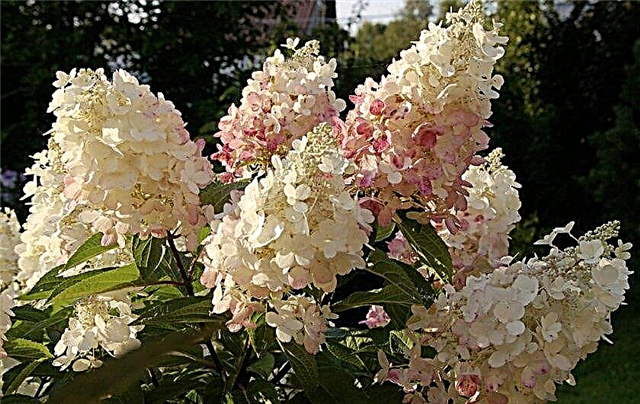
- Limelight - A powerful compact shrub, about 2 m in height. Its inflorescences have a wide pyramidal shape and lime hue. The peculiarity of the flowers lies in the visual effect of the change of shades - in the penumbra, the inflorescences appear yellow-green, and in the sun - sterile white. The bush blooms very luxuriantly, but at the same time does not need support, thanks to strong elastic shoots.

- Vanilla Freyz - A very popular variety with a wide spreading symmetrical crown. At the beginning of the flowering period, the inflorescences have a pale white color, then they turn pink, and by autumn they become crimson. The height of the bushes is 1.5–2 m. They tolerate frosts well, only young seedlings require shelter.

Tree-like
Gardeners also call the tree hydrangea (Hydrangea arborescens) “white spherical” because of the characteristic rounded shape of large inflorescences, the diameter of which can reach 20 cm. They form on the tops of annual shoots and in full dissolution consist of white and cream small flowers. The average height of the bush is 1.5–2 m, although under good conditions it can reach 4 m.
One of the best varieties of the species suitable for planting in the Leningrad region are:
- Annabelle - the bush cannot be called very high, because its growth reaches a maximum mark of 1.8 m, but it grows well in width - the crown of the plant can grow up to 6 m in diameter. Large sizes also relate to inflorescences, which with timely timely top dressing of the bush can reach a diameter of 50 cm, flaunting a cluster of snow-white flowers. The variety is quite adapted to the cold climate.
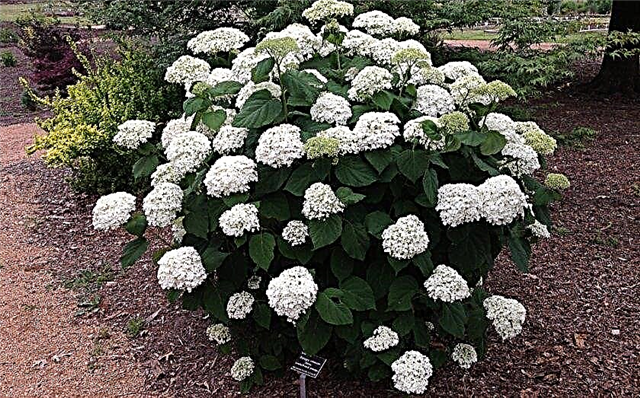
- Grandiflora - an old variety that gained its fame back in 1860. Under natural conditions, the plant can grow to gigantic sizes for hydrangea - up to 10 m high. When cultivated, in the north-western regions, shrubs grow up to 3.5 m and are valued for unpretentiousness in cultivation and frost resistance. Blossom creamy white inflorescences, which on one bush can be more than 300 pcs.

Landing in the Leningrad region
When planting hydrangeas, you need to follow some rules. In particular, this concerns the timing and selection of the most suitable site for the culture. It is important to take into account the plant's requirements for soil, i.e. staying in poor conditions will negatively affect the survival rate of the crop, and sometimes it can also lead to its death.
When to plant
In the climatic conditions of the Leningrad Region, it is better to start planting hydrangeas in the spring. If you carry out the procedure in the fall, there is a risk that early frosts will destroy the root system of a still very weak shrub. The best period is the middle or end of March, when the soil is warm enough, and return frosts will not overtake the young bush by surprise.
Seat selection
In the conditions of the northwestern regions, it is preferable to plant hydrangea in a sunny area, light partial shade is allowed. The plant should receive a sufficient amount of light and heat - this will provide colorful lush flowering and minimize the risk of fungal infections. It is advisable that the site is not located in a draft, which negatively affects the development of culture. Hydrangeas are very fond of moisture, so you need to water them often. However, the swampy soil is unacceptable for plants, because, being in waterlogged soil, the roots of the bush can become sick and begin to rot. Therefore, if you intend to plant hydrangea near a reservoir or in a site with a surface occurrence of groundwater, lay a drainage layer of stone at the bottom of the landing pit.
Hydrangeas are very fond of moisture, so you need to water them often. However, the swampy soil is unacceptable for plants, because, being in waterlogged soil, the roots of the bush can become sick and begin to rot. Therefore, if you intend to plant hydrangea near a reservoir or in a site with a surface occurrence of groundwater, lay a drainage layer of stone at the bottom of the landing pit.
Fertile soil preparation
It is important to properly form the soil for hydrangea cultivation. The soil mixture is prepared separately: mixed garden soil, humus, sand and horse peat in a ratio of 2: 2: 1: 1. Please note that plants prefer acidic soils, which positively affect the brightness of the color of inflorescences. The optimum level of acidity is 5.5–6 pH.
Important! Do not lay manure and nitrogen fertilizers in the planting pits so as not to burn the hydrangea roots.
Staying in an alkaline soil, hydrangeas often become ill with chlorosis. The soil can be acidified by pouring a solution of citric acid (3 tbsp.spoons are diluted in 10 liters of water). The introduction of fallen needles as a mulching material will also help.
Landing stages
The process of planting hydrangea is simple and practically not difficult.
It consists of the following steps:
- Preparing the landing pit. For planting a bush, you need to form a hole with a diameter and depth of about 50 cm. If you intend to plant several bushes at once, observe the distance between them about 1 m.
- Place a drainage layer of rubble, broken brick or other stone at the bottom of the pit.
- Fill the pit 1/3 of the height with a pre-prepared soil mixture.
- Fertilize: 25 g of urea, 70 g of superphosphate and 30 g of potassium sulfate, mix with soil.
- Set the seedling so that the root neck does not go deep into the ground after planting.
- Fill the pit with soil to the top, lightly tamp.
- Water the planting, with the addition of citric acid. The optimal amount of moisture is 10-15 liters per bush.
- Mulch the soil with horse peat, sawdust or needles.
Outdoor Care
Hydrangea is a demanding crop that needs care. Without proper attention on the part of man, a plant often becomes ill, and becomes a tasty prey for insect pests. First of all, gardeners need to know how to water and fertilize shrubs, how to protect them from freezing in the winter, and also take into account the rules of agricultural technology regarding the formation of culture.
Watering and feeding
The main attention should be paid to watering. Hydrangea consumes a lot of moisture, as indicated by its scientific name "hydrangia", translated as "a vessel with water." Watering should be carried out 2 times a week, spending up to 20 liters of water for each planting. In particularly hot periods, you can water 3 times a week. Pay attention to the fact that the plant prefers warm settled liquid, therefore it is advisable to install a barrel in the sunny place of the site and collect water for irrigation in advance. After watering, the soil is mulched using peat or needles. A layer of 10 cm is enough, which will protect the soil from drying out and additionally fertilize the soil. Loosening is periodically recommended - this way the soil will be lighter and, therefore, permeable to moisture and air. In the process of loosening, weed should be removed with the roots.
After watering, the soil is mulched using peat or needles. A layer of 10 cm is enough, which will protect the soil from drying out and additionally fertilize the soil. Loosening is periodically recommended - this way the soil will be lighter and, therefore, permeable to moisture and air. In the process of loosening, weed should be removed with the roots.
Important! Moisture must be applied directly under the root so that water does not fall on the leaves and buds, which can wither from this.
Like all decorative cultures, hydrangea needs top dressing, which is carried out in several stages:
- In the spring. Before the buds swell, the bushes are fed with organic and mineral compounds to ensure good growth of greenery. To do this, you can independently make a solution of potassium sulfate and urea, taken in 20 g and diluted in 5 l of water.
- When the buds begin to appear on the bushes, carry out the following dressing using superphosphate (25-30 g of the product are diluted in a bucket of water and watered with a solution of the bush).
- At the beginning of summer It is recommended to nourish hydrangea with Nitrofos, making a solution according to the instructions.
- Autumn top dressing performed in order to prepare the culture for wintering and to ensure the formation of new shoots. In September, it is useful to fertilize the soil with a solution of superphosphate and potassium sulfate (for 10 liters of water, 1 tbsp.spoon of each product).
A good comprehensive mineral fertilizer for hydrangeas will be Fertimix, a liquid composition that is easily diluted in water. It contains the necessary biologically active components that contribute to good growth and decorative flowering of the culture.
Pruning
In relation to hydrangea, 2 types of pruning are performed - sanitary and molding. Sanitary haircuts involve the removal of damaged, diseased or dry areas of the bush. Pruning is started in early spring, before the buds swell, then they carefully monitor the shrubs throughout the growing season.
The last sanitary haircut is carried out in the fall, in preparation for winter crops. Formative pruning is carried out in the spring, in the conditions of the North-Western district, the optimal period is March-April. If you are late with the deadlines, wait until the leaves appear on the bush, and only then proceed with the procedure.
How exactly to cut hydrangea depends on its type:
- Panicle. The upper parts of the shoots (2-3 strong buds) are cut off on the bush to ensure the growth of large young inflorescences.
- Tree-like. Pruning of this pitchfork of the plant should be started as early as possible, t. It develops more slowly than others. It is necessary to shorten last year's shoots to the length of 4 upper pairs of buds.
- Large leaf. Cut large shoots to the level of outgoing new branches, as well as small weak shoots and perennial branches.

Stands for branches
Under good conditions, hydrangea bushes “bloom” in luxurious inflorescences during the flowering period, which create a certain load. As a result, shrubs scatter to the sides, especially after rain. To prevent this from happening, you need to make a support. A metal tube 30–35 cm high is driven in the center of the bush. A round stick is inserted into it (you can take a handle from an old mop).
Now, with the help of cords, braces are made that are tied to the shoots with the largest inflorescences on one side and the top of the stick on the other. If you select the green material, the laces will not be visible at all, but the bush will always have a beautiful compact shape. For the winter, the device is removed, leaving only a hammered metal tube.
Shelter for the winter
Many modern hybrid varieties of hydrangea have increased winter hardiness, the ability to tolerate frosts down to –25 ° С. However, given the fact that in the north-western regions, including the Leningrad region, winters are very severe, better not to take risks and cover the bush for the winter.
First, sanitary pruning is carried out, then inflorescences and foliage are removed from the plant. The site must be cleaned of biological debris in order to prevent the wintering of harmful microorganisms and insects. After this, fertilizers are applied and the soil is mulched with a layer of about 15 cm. Next, you need to collect the branches of the shrub in an armful and bend to the ground, fix.
No need to be afraid that the branches will break - at the hydrangea they bend well. It is better to put wooden boards under the inclined branches, which will protect the shrub from direct contact with the ground. From above the bush is covered with burlap or spanbond, covered with sawdust. After this, a second “blanket” is formed, but already from perforated polyethylene. In addition, on top you can lay another spruce branch in case the winter is not snowy.
Breeding
There are many ways to propagate hydrangea. The most rarely used of them is getting planting material from seeds. This method takes a lot of time and effort, but most importantly - it does not give any guarantee that the new plant will gain all the properties of the mother, including decorative qualities. Therefore, it is better to propagate the culture by cuttings, layering, or simply divide the adult bush during transplantation.
Dividing the bush
It is better to start the procedure in the spring, so that the dividers have time to take root and grow stronger before the onset of cold weather. Previously, an adult bush is moistened with plenty of water. While moisture will saturate the soil, you need to prepare landing pits with a depth of about 50 cm, a diameter of 35–40 cm. Each hole is fertilized with wood ash, compost. The adult bush is dug up from all sides, then removed. This method is considered by gardeners to be the simplest and most reliable. Now you need to divide it into several fragments so that each one has several buds of renewal - from which the aboveground crown of new bushes will then develop. Before planting, it is recommended to shorten the shoots and roots a little, as well as to process the dividers in a growth stimulator (the “Heteroauxin” preparation is suitable).
This method is considered by gardeners to be the simplest and most reliable. Now you need to divide it into several fragments so that each one has several buds of renewal - from which the aboveground crown of new bushes will then develop. Before planting, it is recommended to shorten the shoots and roots a little, as well as to process the dividers in a growth stimulator (the “Heteroauxin” preparation is suitable).
After treatment, planting material is placed in pits, covered with soil, a little tamped and watered abundantly, spending 10-15 liters of water for each instance. After that, the soil is mulched with sawdust or peat.
Cuttings
Cutting green cuttings begin in the summer, tentatively - at the end of June. You need to cut off the upper fragments of shoots, 12-15 cm long. It is better to do this in cloudy weather or in the early morning. The lower parts of the cuttings are cleaned so that only 1-2 pairs of upper leaves with buds remain. The material is installed in a container with a growth stimulator (a good tool - "Epin") for 30-40 minutes. After processing, you can begin to land. It is necessary to prepare in advance a container with a soil mixture of sand and peat, taken in equal proportions. Each stalk is planted at an angle of 6-8 cm. After planting, the beds should be regularly watered to prevent the soil from drying out. Rooting will last 1–1.5 months. Young plants are grown in a container until spring comes, after which they can be transplanted into the open ground.
It is necessary to prepare in advance a container with a soil mixture of sand and peat, taken in equal proportions. Each stalk is planted at an angle of 6-8 cm. After planting, the beds should be regularly watered to prevent the soil from drying out. Rooting will last 1–1.5 months. Young plants are grown in a container until spring comes, after which they can be transplanted into the open ground.
Layering
This method is also simple. Start work in early spring. On the sides of the shrub you need to look for a few strong shoots. Dig the soil and form grooves in it, with a depth of 3-5 cm.Each shoot is laid in a groove, pinned and sprinkled on top of the ground. At the same time, observe that the top of the shoot remains visible above the ground and is located in a vertical position (it is better to tie it to a peg).
Did you know? Hydrangea — one of the oldest plants on the planet. Archaeologists have information about its growth in North America 40 thousand years ago.
Layers need to be watered regularly. After a while, you will notice the appearance of young vertical shoots. When their growth reaches 20 cm, new bushes need to be sprinkled with earth - this procedure is repeated 1 time per week. At the end of September, you can start transplanting bushes: each of them is separated from the mother plant, excavated and placed in new planting pits.
Transplant Rules
Most types of hydrangeas safely tolerate transplantation, with the exception of panicled, which is difficult to survive this procedure in adulthood. Shrubs are transplanted in early spring, after the snow melts. If the plant wintered in the greenhouse, it is better to postpone the process until the end of the period of threat of frost. In the Leningrad region, gardeners transplant at the end of March.
Immediately you need to choose the right place for planting and prepare pits with fertilized soil. The bush is pre-prepared for the procedure: cut old dried branches, and young cut in half. The shrub is dug from all sides in a radius of 40 cm to a depth of 1.5–2 bayonet shovels. Then the plant is carefully lifted and removed from the pit, trying not to pull on the branches.
If there is a suspicion that the culture is unhealthy, you need to carefully examine the root system, remove damaged roots and insects, if any. It is advisable to treat the rhizome with a 1% solution of potassium permanganate. A healthy shrub is transplanted with an earthen lump. This should be done as quickly as possible so that the roots are not weathered and dry. After transplanting, the bush is watered, the soil is mulched. Next you need to take care according to the general rules. Planting decorative hydrangea in the conditions of the north-western regions is a very real idea. The main thing is to choose the right variety and observe the rules of planting. Further, it all depends on your care - with proper care, the culture will turn into a real highlight of landscape design.
Next you need to take care according to the general rules. Planting decorative hydrangea in the conditions of the north-western regions is a very real idea. The main thing is to choose the right variety and observe the rules of planting. Further, it all depends on your care - with proper care, the culture will turn into a real highlight of landscape design.






